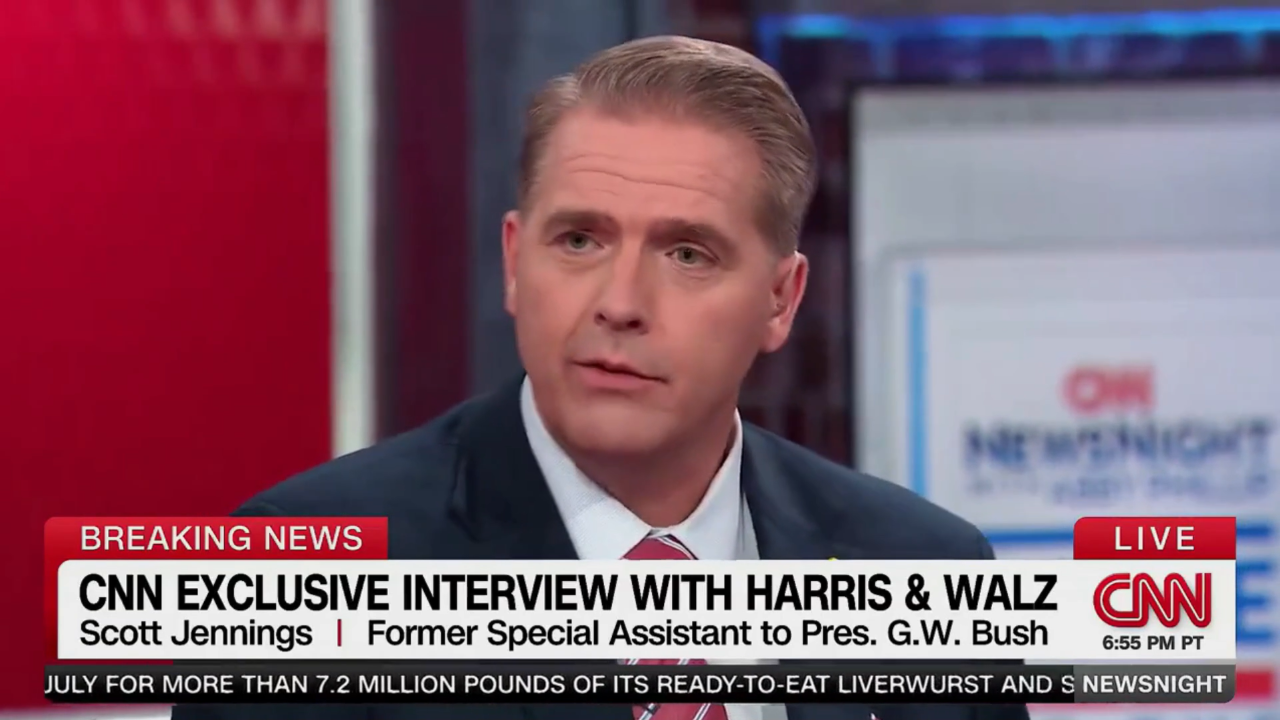Donald Trump is getting the band back together — at least the part of the band that’s still in his good graces.
The former president is leaning on many of the people who served in top positions in his first administration to help prepare an aggressive set of policies he plans to pursue right out of the gate, if elected. The result, insiders say, is an administration that would be better prepared than in 2016 to implement Trump’s priorities soon after the inauguration — especially on core agenda items like trade and tariffs.
The transition team is far more politically coherent this time around, said Mauricio J. Claver-Carone, who served on Trump’s 2016 transition and in the Trump administration, since those around the former president know what he wants and how he works. Now, Trump staffers can no longer make their own centers of power, and the upcoming cabinet members “will realize this time around that they’re serving a president, not the other way around,” he added.
“The transition this year is an extension of the key players in the Trump orbit,” agreed a Republican lobbyist in contact with the transition team, who requested anonymity to discuss sensitive dynamics. “As a result, the likelihood of a disruptive reset is much less likely this time than it was in 2016.” That year, Trump demoted former New Jersey Gov. Chris Christie as head of this transition shortly after the election, creating a power vacuum that delayed transition planning by several weeks.
The Trump transition is formally being led by former Trump Small Business Administration chief Linda McMahon, who is handling the policy side, and billionaire financier Howard Lutnick, who is overseeing the personnel vetting. Lutnick, one of the few members of the team who did not work for Trump’s White House, has been the public face of the operation thus far, while drawing scrutiny for his potential conflicts of interest and combative appearances on cable news.
The policy preparations have been far lower profile — by design, given the backlash the conservative Heritage Foundation attracted for its Project 2025 blueprint for a second Trump administration. But behind the scenes, the Trump transition is leaning on a diffuse roster of former Trump administration officials, according to conversations with 16 people familiar with Trump transition planning, who were granted anonymity to discuss confidential discussions.
A small sample include:
- U.S. Trade Representative Robert Lighthizer, who is crafting trade and economic plans, along with Jamieson Greer, Lighthizer’s former chief of staff.
- Federal Reserve Board member Kevin Warsh, who is also involved with the economic portfolio.
- Special envoy for Iran Brian Hook, who is involved with preparing a Trump State Department.
- Director of National Intelligence John Ratcliffe, who is involved with national security personnel and policy planning.
- Office of Management and Budget general counsel Mark Paoletta, who is helping craft the policy playbook for the Justice Department.
- Interior Secretary David Bernhardt is joining the transition planning process, according to two people aware of his plans.
Throughout the process, Trump officials are taking care to keep their activities under wraps, wary of both media scrutiny and cooperation with the Biden administration, and keen not to unnerve their boss.
Trump, who is known for being superstitious, “doesn’t like planning until things are concrete,” and doesn’t want to be “presumptuous,” said one former senior administration official.
Another former Trump administration official with knowledge of the discussions said transition officials are mindful of the lessons from the 2016 transition, and are keen to avoid the same turmoil. “They’re being more confidential about it. … They don’t want distractions and personnel stories popping up.”
The Trump transition did not respond to requests for comment.
But a person familiar with transition policy planning confirmed Lighthizer is crafting economic policy for the Treasury Department, the National Economic Council, the U.S. Trade Representative’s office, as is former Trump speechwriter Vince Haley, who is also working for the Trump campaign. Those figures are preparing an aggressive trade agenda for the first 100 days, which will likely include some executive action on tariffs, though the details are still being debated.
Lighthizer has recently spoken to Trump himself about economic policy planning, said the person. A second person familiar with the transition planning, also granted anonymity to discuss private deliberations, said Lighthizer would be a lead contender for any of the top economic policy positions.
“There’s one policy area that’s going to be defining for the second Trump administration, and that’s tariffs,” said the person with direct knowledge of policy planning. “And there’s a very small group of people working on that and it’s the most important part of the policy planning for the second administration.”
That planning is part of the operation being loosely overseen by McMahon. The people familiar with the transition’s policy work depicted an informal web of Trump advisers and MAGA loyalists who each are working on preparing “action plans” for the first 100 days, sometimes at the direction of campaign or transition officials, but also outside the formal bounds of those organizations.
Many of those supporting the transition are affiliated with America First Policy Institute, a think tank formed after Trump’s 2020 defeat that has become a home for Trump loyalists. AFPI has been developing its own plans for the next administration over the last several years. Lighthizer chairs the nonprofit group’s Center for American Trade, and Bernhardt chairs the Center For American Freedom.
Doug Hoelscher, who led AFPI’s “America First Transition Project,” has been officially working for the transition, as well, according to someone familiar with his hiring. Rob Law, another AFPI staffer and former chief of policy at U.S. Citizenship and Immigration Services, is helping vet personnel for the Department of Homeland Security.
Two people not affiliated with AFPI or Trump’s first term are also advising Trump on energy policy — North Dakota Gov. Doug Burgum and oil tycoon Harold Hamm are playing leading roles, according to a person with knowledge of the planning.
The policy preparations are operating on a separate track from the transition’s primary job — vetting candidates for the thousands of federal job openings Trump will have to fill if he wins, a task being overseen by Lutnick.
“The personnel effort is the overwhelming focus of the transition,” said another person with knowledge of the efforts, who said they started several weeks ago and that interviews are occurring for prospective staffers.
Another person familiar with the transition described it as highly compartmentalized. No one involved has visibility outside of their narrow window and only a small group of people close to Lutnick have any visibility into who makes it onto a list, even if there are people collecting names and suggestions.
Those personnel matters are delineated between finding people to work on the agency-specific “landing teams” — which are tasked with working with the federal agencies to facilitate the handoff before the next president is inaugurated — and the more permanent staff members and Cabinet officials who will run the agencies after Jan. 20. There may be overlap between some of the so-called “landing teams” and the permanent staff, said three people familiar with planning, who stressed that no final decisions have been made about Cabinet officials or the broader makeup of the administration.
And as it stands now, Trump’s landing teams may not be able to access the agencies they are designated to work with, since his transition team has refused to sign agreements with the Biden administration on use of federal resources and information-sharing, in a break with modern precedent. The refusal to sign those agreements allows Trump’s transition team to raise unlimited funds without disclosing their donors while avoiding oversight from federal bureaucrats, whom Trump and his advisers distrust. But if the former president wins the election and continues to drag his feet, he may face strict limits on the information he and his team can obtain.
Lutnick recently expressed openness to signing the agreements in the coming days.
Some on Trump’s transition believe that there are ways to work around the federal government’s transition agreement. Advisers to Trump have circulated a memo, first reported by The New York Times, recommending Trump refuse to allow background checks of his top aides, which traditionally are conducted by the F.B.I., an agency viewed with suspicion by people in Trump’s orbit. After he enters office, they argue, Trump could simply grant security clearances to the appointees himself.
Ben Lefebvre and Sam Sutton contributed to this report.
Read the full article here











